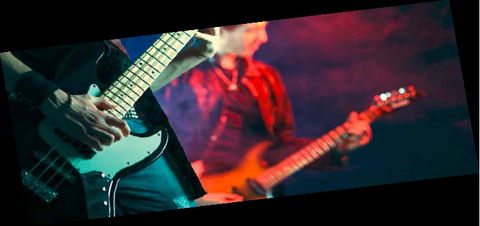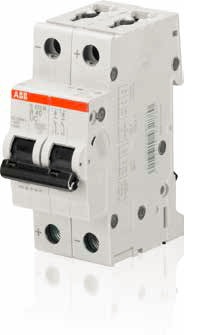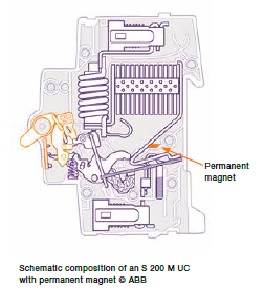Some interesting facts about AC/DC, the war of currents and how today's circuit breakers switch currents on and off.

The AC/DC world tour "Rock or bust" started earlier this year. It’s not only the rock band’s name that comes from electrical engineering, but a few of their album names as well such as "High Voltage", "Powerage", or "Flick of the Switch." If you are a fan, then you probably know the story about the origin of the band name. Brothers Angus and Malcolm saw the letters “AC/ DC“on the back of a sewing machine and thought it would be great for their band's name. As we all know, AC/DC is the English abbreviation for alternating current and direct current. While the AC/DC band members were pioneers of hard rock, many years earlier there were three pioneers of electrical engineering, Nicola Tesla, George Westinghouse and Thomas Alva Edison. Around 1890 they argued over what was better: alternating (AC) or direct current (DC).
War of currents
At that time, Tesla and Westinghouse were favoring alternating current, while Edison, the inventor of the lightbulb, was supporting direct current. This era was aptly named the "war of currents". By the end of the 19th century, the use of alternating current prevailed in energy transmission and distribution. The argument has never been settled nor is it of concern for our modern times.
Importance of DC
Today, the growing importance of DC can no longer be denied. Special applications, climate change and energy policy all require the use of direct current technology. Renewable energy sources like photovoltaic generate direct current. Electric cars charge noticeably faster with direct current. It is obvious that DC will play a growing role in power generation, storage and use.
On and off – Switching currents as a challenge
In order to switch currents on or off, circuits have to be connected or disconnected. It may sound simple, but it gets more complex with closer scrutiny. Now for the techy part: Switching is easy to put in practice for alternating currents. Tripping causes an electric arc that extinguishes on the zero crossing of the sine wave-form of the current. From that point on, currents can be disconnected easily. Devices that disconnect circuits at the zero crossing are called zero point extinguishers. Our current limiting devices of the series S 200 have energy class 3. Their specialty is to extinguish the electrical arc long before the zero crossing. This reduces the load on connected lines and devices, which increases their life span. This fundamental ability makes these circuit breakers in DC applications useful as well.
Why can't you operate direct current with any circuit breaker?
There is no zero crossing for direct current applications and the electric arc that comes from opening the contacts does not extinguish by itself. Therefore, you have to come up with an idea for the extinction of the electric arc. The higher currents escalate in the case of a fault. This increase generates the required magnetic field to draw the arc into the arc extinction chamber. By contrast, the self-induced magnetic field will not suffice for lower currents up to 500A in order to draw the arc into the arc extinction chamber (see graphic). For alternating currents this danger can be avoided easily, since there will always be a zero crossing that allows a disconnection. This possibility is not given for direct current, as there is no zero crossing. In this case, a permanent magnet ensures that the electric arc is drawn safely and reliably into the extinction chamber at all times (see picture). The basis for this effect is the Lorentz force.
When looking at the case of an AC/DC circuit breaker, you will notice that the circuit points are marked with a plus (+) and a minus (–). The reason is that the correct direction of electric current has to be considered, so the Lorentz force can draw the arc into the extinction chamber. You cannot get a glimpse of how innovative these compact devices are and what complex processes take place inside of them by just looking at the cover. But that’s exactly what is fascinating about them: a simple design with a brilliant function. And who knows? There might even be one or two circuit breakers hidden in the midst of the stage equipment of the famous rock band AC/DC.


